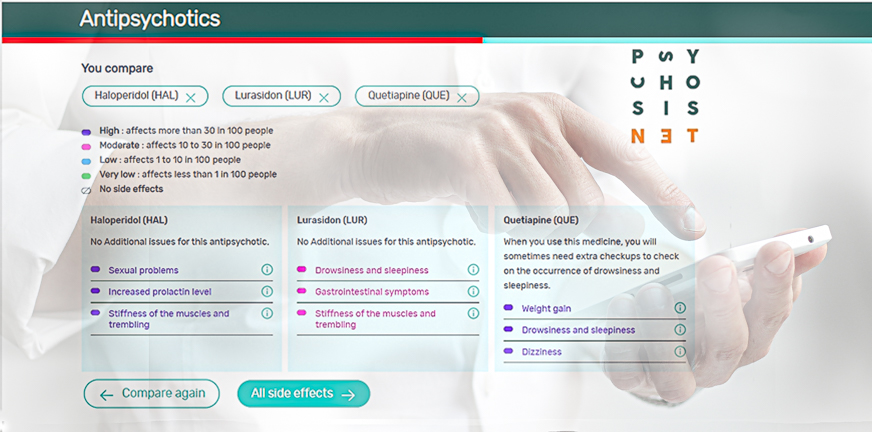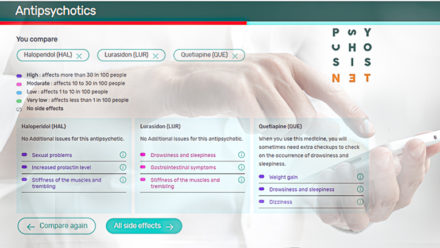
Welcome to our new Antipsychotic Selection Tool
We created the Antipsychotic Selection Tool because we get so many questions about antipsychotics that we decided to put the information together and make it available for everyone.
People often ask us whether antipsychotic drug X is “better” than drug Y. Our answer is then invariably: on average, antipsychotics are equally effective. At the group level, one is not really inferior or superior to another (with the possible exception of a drug called clozapine – but this is not certain).
Underneath the lack of differences at the group level, however, there is enormous personal variation. For some, drug X works much better than drug Y, while for others it is exactly the other way around! And it can be even more complicated: for one person, drug X can be effective in reducing psychosis, but not depression – while for another person, drug X does not work for psychosis but does work for depression.
Which antipsychotic is best for you cannot be predicted
In short: what an antipsychotic is going to do to someone is very personal. It is a matter of trial-and-error – of trying and learning. You cannot predict in advance which drug will be effective for which person. You have to keep trying until you come across something you think will contribute to your quality of life. It can be a long and painful quest – and sometimes no antipsychotic drug works. In that case, treatment will have to focus on non-drug therapies. After all, there is no point in taking medication if it does not contribute anything – but does cause side effects.
But what is there to choose, will you ask?
Although the effect of an antipsychotic on a person cannot be accurately predicted, something else can be reasonably well predicted, and this has to do with the side effects of a drug. Antipsychotics differ in their side-effect profile and these create reasonably predictable differences between drugs.
So you cannot choose on the basis of the expected effect of an antipsychotic, but you can choose on the basis of the expected side effects
This is what the Antipsychotic Selection Tool is for: it helps people to choose based on the expected pattern of side effects. With one drug you will gain weight, with another drug you will be at risk of movement disorders and with yet another drug you will be at risk of sexual side effects. This is useful to know in advance when making your choice. Hence the name: Antipsychotic Selection Tool.
No one – including psychiatrists – has the side-effect profile of all antipsychotic drugs exactly in memory. This because the side-effect profile of all antipsychotics together is so complex that it is difficult to memorize in its entirety. That is why we have created a tool that makes it easy to compare antipsychotics by type and frequency of side effects.
In conclusion
Antipsychotics cannot be selected on the basis of their effect, but they can be selected on the basis of their side effects. This is now possible for everyone with the Antipsychotic Selection Tool.

Please make use of it and help your doctor to prescribe based on what you think is important.
PS: If you have any feedback on the tool, please let us know!





Comments: